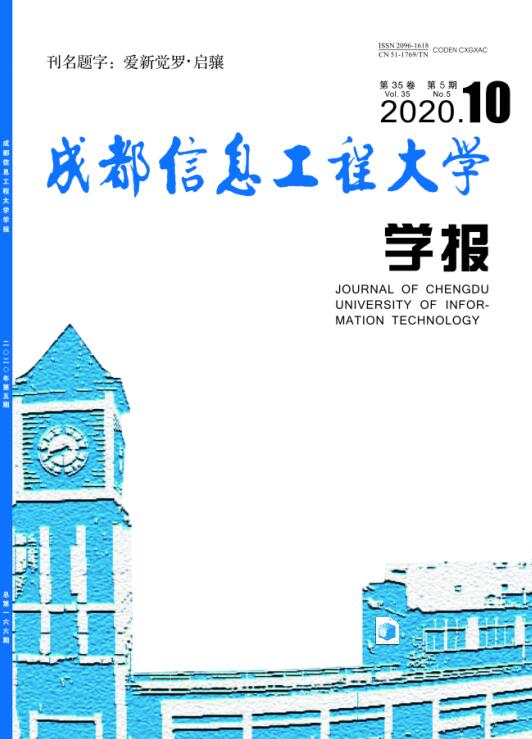LI Jiuling,GAN Gang.Research on Classification Method of Android Malware Family based on Improved MobileNetV2 Model[J].Journal of Chengdu University of Information Technology,2024,39(05):546-552.[doi:10.16836/j.cnki.jcuit.2024.05.005]
基于改进的MobileNetV2模型的安卓恶意家族分类方法研究
- Title:
- Research on Classification Method of Android Malware Family based on Improved MobileNetV2 Model
- 文章编号:
- 2096-1618(2024)05-0546-07
- 关键词:
- MobileNetV2; RGB图像; 注意力机制; 安卓恶意家族分类
- 分类号:
- TP309.2
- 文献标志码:
- A
- 摘要:
- 针对人类视觉系统对颜色的高度敏感特点,提出一种基于改进的MobileNetV2模型的安卓恶意家族分类方法。该方法通过引入注意力机制,对RGB图像的3个通道进行特征融合,提高模型对图像颜色信息的敏感度。同时,针对小样本数据集的问题,提出一种改进的模块结构,减少模型的深度和宽度,以提高模型对小样本数据集的特征提取能力。将SE(squeeze-and-excitation network)注意力机制与CBAM(convolution block attention module)注意力机制融入模型进行对比,实验结果表明:CBAM注意力机制在该图像分类任务中表现出显著的优越性,准确率达到94.18%,比原有模型提高了3.16%,验证了该方法的有效性和实用性。该研究对于小样本数据集的图像分类任务的准确性和实际应用中的性能有重要意义。
- Abstract:
- Aiming at the highly sensitive characteristics of the human visual system to color, a classification method of the Android malicious family based on the improved MobileNetV2 model is proposed. By introducing the attention mechanism, this method performs feature fusion on the three channels of RGB image to improve the sensitivity of the model to the color information of the image. At the same time, aiming at the problem of small-sample datasets, an improved module structure is proposed, which reduces the depth and width of the model and improves the feature extraction ability of the model for small-sample datasets. The experimental results show that the Sequeeze-and-Excitation Network(SE)and the Convolution Block Attention Module(CBAM)are both located in the model. The experimental results show, the CBAM attention mechanism shows significant superiority in this image classification task, with an accuracy rate of 94.18%, which is 3.16% higher than the original model, which verifies the effectiveness and practicality of the proposed method. This study has important implications for the accuracy of image classification tasks and the performance in practical applications of small-sample datasets.
参考文献/References:
[1] Bakour K,Ünver H M.VisDroid:Android malware classification based on local and global image features,bag of visual words and machine learning techniques[J].Neural Computing and Applications,2021,33:3133-3153.
[2] Rahali A,Lashkari A H,Kaur G,et al.DIDroid:Android malware classification and characterization using deep image learning[C].The 10th International Conference on Communication and Network Security.2020:70-82.
[3] Vasan D,Alazab M,Wassan S,et al. IMCFN:Image-based malware classification using fine-tuned convolutional neural network architecture[J].Computer Networks,2020,171:107138.
[4] Yuan B,Wang J,Liu D,et al.Byte-level malware classification based on markov images and deep learning[J].Computers & Security,2020,92:101740.
[5] Freitas S,Duggal R,Chau D H.MalNet:A large-scale image database of malicious software[J].arXiv preprint arXiv:2102.01072,2021.
[6] Allix K,Bissyandé T F,Klein J,et al.Androzoo:Collecting millions of android apps for the research community[C].Proceedings of the 13th International Conference on Mining Software Repositories.2016:468-471.
[7] Pan Y,Ge X,Fang C,et al.A systematic literature review of android malware detection using static analysis[J].IEEE Access,2020,8:116363-116379.
[8] Mat S R T,Ab Razak M F,Kahar M N M,et al.A Bayesian probability model for Android malware detection[J].ICT Express,2022,8(3):424-431.
[9] Raghav U,Martinez-Marroquin E,Ma W.Static analysis for Android malware detection with document vectors[C].2021 International Conference on Data Mining Workshops(ICDMW).IEEE,2021:805-812.
[10] Alzaylaee M K,Yerima S Y,Sezer S.DL-Droid: Deep learning based android malware detection using real devices[J].Computers & Security,2020,89:101663.
[11] Thangavelooa R,Jinga W W,Lenga C K,et al.Datdroid:Dynamic analysis technique in android malware detection[J].International Journal on Advanced Science,Engineering and Information Technology,2020,10(2):536-541.
[12] Sihag V,Vardhan M,Singh P,et al.De-LADY:Deep learning based Android malware detection using dynamic features[J].J. Internet Serv.Inf.Secur.,2021,11(2):34-45.
[13] YANG Jiyun,TANG Jiang,YAN Ran,et al.Android malware detection method based on permission complement and API calls[J].Chinese Journal of Electronics,2022,31(4):773-785.
[14] Cai H,Meng N,Ryder B,et al.Droidcat:Effective android malware detection and categorization via app-level profiling[J].IEEE Transactions on Information Forensics and Security,2018,14(6):1455-1470.
[15] Zhang Z,Qi P,Wang W.Dynamic malware analysis with feature engineering and feature learning[C].Proceedings of the AAAI Conference on Artificial Intelligence.2020,34(1):1210-1217.
[16] Surendran R,Thomas T,Emmanuel S.A TAN based hybrid model for android malware detection[J].Journal of Information Security and Applications,2020,54:102483.
[17] Rong C,Gou G,Cui M,et al.TransNet:Unseen malware variants detection using deep transfer learning[C].International Conference on Security and Privacy in Communication Systems.Springer,Cham,2020:84-101.
[18] Nahmias D,Cohen A,Nissim N,et al.Deep feature transfer learning for trusted and automated malware signature generation in private cloud environments[J].Neural Networks,2020,124:243-257.
[19] Prima B,Bouhorma M.Using transfer learning for malware classification[J].The International Archives of Photogrammetry,Remote Sensing and Spatial Information Sciences,2020,44:343-349.
[20] Khetarpal A,Mallik A.Visual malware classification using transfer learning [C].2021 Fourth International Conference on Electrical,Computer and Communication Technologies(ICECCT).IEEE,2021:1-5.
[21] Jiang Y,Li R,Tang J,et al.AOMDroid:Detecting obfuscation variants of Android malware using transfer learning[C].International Conference on Security and Privacy in Communication Systems.Springer,Cham,2020:242-253.
[22] 陈小寒.基于深度学习的恶意软件可视化分类技术研究[D].长沙:湖南师范大学,2021.
[23] 于兴崭,芦天亮,杜彦辉,等.基于合成图像和Xception改进模型的安卓恶意家族分类方法[J].计算机科学,2023,50(4):351-358.
[24] Sandler M,Howard A,Zhu M,et al.Mobilenetv2:Inverted residuals and linear bottlenecks[C].Proceedings of the IEEE Conference on Computer Vision and Pattern Recognition.2018:4510-4520.
[25] Hu J,Shen L,Sun G.Squeeze-and-excitation networks[C].Proceedings of the IEEE Conference on Computer Vision and Pattern Recognition.2018:7132-7141.
[26] Woo S,Park J,Lee J Y,et al.Cbam:Convolutional block attention module[C].Proceedings of the European Conference on Computer Vision(ECCV).2018:3-19.
备注/Memo
收稿日期:2023-05-29
基金项目:四川省科技计划资助项目(2023YFG0292,2021ZDY0011); 四川省社科基金资助项目(SC21B034)
